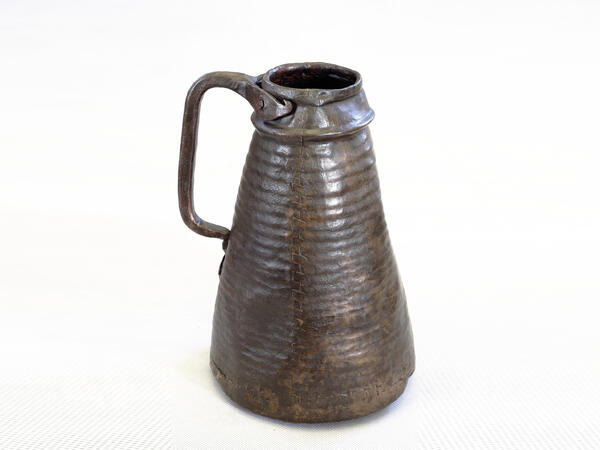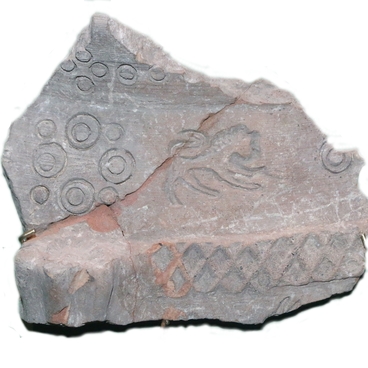The Volga Bulgaria masters were skilled in processing non-ferrous metals. The main volume of alloys came from the northern region — the Perm Cis-Ural region. There was a large metallurgical center, which provided raw materials for its workshops and craftsmen from neighboring regions. Perm artisans did not just smelt ore, they alloyed copper and supplied the market with finished brass and bronze in the form of rod-shaped ingots. Alloying was a complicated process whereby other elements were added to the pure metal so that the alloy acquired new properties. Bulgar metallurgists could also smelt copper themselves: archaeologists found commercial ingots — Volga Bulgaria probably supplied them to other regions. It also bought lead, tin, and zinc from its northern neighbors and resold them to Central Asian countries.
During excavations at the Bilyar and Bolgar ancient settlements, scientists found the remains of copper-smelting furnaces. Their design resembled bloomeries — the first smelting furnaces. The term ‘bloomery’ appeared in the 18th century. The furnaces were called so because they were filled with unheated, raw air, in contrast to the steam-operated furnaces.
Archaeologists have also found a clay oven for air supply and the remnants of copper ore. There were also clay crucibles — small containers in which the metal was melted, as well as ‘liachki’ — ladles for pouring the composition into molds. Copper was most often used to make cauldrons, ladles, lamps, and kumgans.
The Bulgars made dishes, keys, locks, scissors, scales, accessories for clothes, and household items of non-ferrous metals.
Kumgan is a narrow-necked vessel, a jug for water with a spout, handle and lid. Such containers were used in Volga Bulgaria for washing faces and hands, according to Islamic tradition. They were made of clay or metal. The smallest vessels had a capacity of 0.5 liters, while the largest vessels had a capacity of up to 19 liters. More often, a two-liter copper vessel was used in everyday life.
In the central regions of Russia, this jug appeared in the 16th-17th century, but it was used differently. It was used to store and serve drinks, most often bread kvass.
During excavations at the Bilyar and Bolgar ancient settlements, scientists found the remains of copper-smelting furnaces. Their design resembled bloomeries — the first smelting furnaces. The term ‘bloomery’ appeared in the 18th century. The furnaces were called so because they were filled with unheated, raw air, in contrast to the steam-operated furnaces.
Archaeologists have also found a clay oven for air supply and the remnants of copper ore. There were also clay crucibles — small containers in which the metal was melted, as well as ‘liachki’ — ladles for pouring the composition into molds. Copper was most often used to make cauldrons, ladles, lamps, and kumgans.
The Bulgars made dishes, keys, locks, scissors, scales, accessories for clothes, and household items of non-ferrous metals.
Kumgan is a narrow-necked vessel, a jug for water with a spout, handle and lid. Such containers were used in Volga Bulgaria for washing faces and hands, according to Islamic tradition. They were made of clay or metal. The smallest vessels had a capacity of 0.5 liters, while the largest vessels had a capacity of up to 19 liters. More often, a two-liter copper vessel was used in everyday life.
In the central regions of Russia, this jug appeared in the 16th-17th century, but it was used differently. It was used to store and serve drinks, most often bread kvass.


